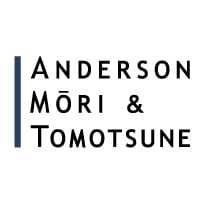

Deputy general manager of legal department | Marubeni







Tomoya Hashimoto
Deputy general manager of legal department | Marubeni
What are the most significant cases or transactions that you have been involved in over the past year?
The most significant transactions on which I have led my team in the last year are two copper-related projects. First, an expansion project at Centinela Copper Mine in the Repulic of Chile, and second, the acquisition of interests in Los Pelambres Copper Mine and Pan Pacific Copper Co, Marubeni, in its mid-term Management strategy “GC2024”, positions green strategy as a fundamental approach to enhancing corporate value. As the copper business is classified as a green business, Marubeni has been strengthening and promoting both resource investment and trading in copper products accordingly. In both transactions, I led my team in diligently analysing the legal risks of the projects and all relevant contracts, summarising major legal and regulatory issues, and reporting on these to Marubeni Investment Committee members for their decision. Also, I and my team led negotiations of the relevant contracts, collaborating with external counsel.
In December 2023, Marubeni, in its partnership with UK-based Antofagasta, finalised the decision to invest in an expansion project at Minera Centinela located in the Republic of Chile (in which Marubeni has a 30% stake). Since first participating in the development of the Centinela copper mine in 2008, Marubeni has collaborated with Antofagasta to investigate the potential for an expansion project to capitalise on the Centinela District’s abundant resources. The expansion project’s cost is estimated at US$4.4bn. With plans to secure project financing at the Centinela copper mine, the anticipated contribution from its shareholders is expected to be around 40% of the costs.
In December 2023, Marubeni reached an agreement with JX Metals Corporation to acquire an additional 3.27% stake in Menara Los Pelambres Copper Mine in the Republic of Chile and a 20% stake in Pan Pacific Copper Co. (PPC), held by JX Metals.
Los Pelambres, jointly operated by Marubeni’s partner Antofagasta and a Japanese consortium that includes Marubeni, is one of the world’s largest copper mines, with an annual copper production of approximately 400,000 tons and top-tier cost competitiveness globally. Marubeni had owned a 9.21% stake in the mine, and this ownership has increased to 12.48% following this transaction. PPC is a company that supplies non-ferrous metals, mainly copper, by procuring raw materials, refining and processing on consignment, and selling products, as a joint venture between JX Metals and Mitsui Mining & Smelting Co. With an annual copper sales volume of around 650,000 tons, it boasts the largest supply in Japan. Trough the transactions, Marubeni and PPC will combine their networks to further strengthen raw material procurement and sales in Asia to provide higher added value throughout the copper supply chain.
Based on your experience, what is the key to collaborating successfully with business partners?
External counsel are the most important business partners for Marubeni’s legal department. As of 1 July 2024, our legal department within the Tokyo office comprises 51 members. However, our human resources are relatively limited given the wide range of business areas and the scope of operations we cover. Consequently, we regard external counsel as quasi-members of our legal department, making collaboration with them essential to fulfilling our missions. One of my significant responsibilities, assigned by senior executives, is to manage the relationship between the Marubeni Group and key law firms worldwide. I have been overseeing this task since 2018 and am dedicated to continuously enhancing our management system.
While we have maintained a positive and healthy relationship with all internal business teams, I believe it is crucial to maintain and regularly update a system to prevent scenarios where a business team and external counsel engage in significant communications without the legal department’s knowledge, or engage with external counsel in a way that is contrary to our long-term relationship-building. In essence, members of the legal department should be involved in all critical interactions with external counsel to ensure we receive precise and optimal advice, take a consistent approach across transactions, and can appropriately manage our external counsel relationships.
From my experience, successful collaboration with external counsel hinges on sharing all necessary internal information. This encompasses details about the corporate character, business plans, decision-making processes, and sometimes even the dynamics between the legal department and the relevant business teams.
By ensuring that external counsel and our legal department’s members collaborate from a unified perspective, external counsel can provide accurate and optimal advice, thereby contributing to the successful achievement of our mission.
How do you motivate and manage the other members of your legal team well?
I believe that actively setting goals with team members, consistently monitoring their progress, and aiding them in reaching these goals are crucial for sustaining their motivation. Conducting performance evaluations merely once a year is not enough. It is vital to regularly review progress towards the goals set with team members, always prioritising a supportive attitude. Having managed the development of Legal team members in both Tokyo and Singapore for over a decade, I am convinced that this approach is essential, transcending any national or cultural differences among team members. The initial step in setting goals for team members is to precisely identify their strengths and weaknesses. Following that, it is crucial to determine how to assist them in their professional growth and in enhancing their market value. From my experience, I am certain that when each team member is committed to achieving clear objectives, it not only cultivates mutual respect among members but also significantly strengthens the organisation’s cohesion.
Deputy general manager of legal department | Marubeni